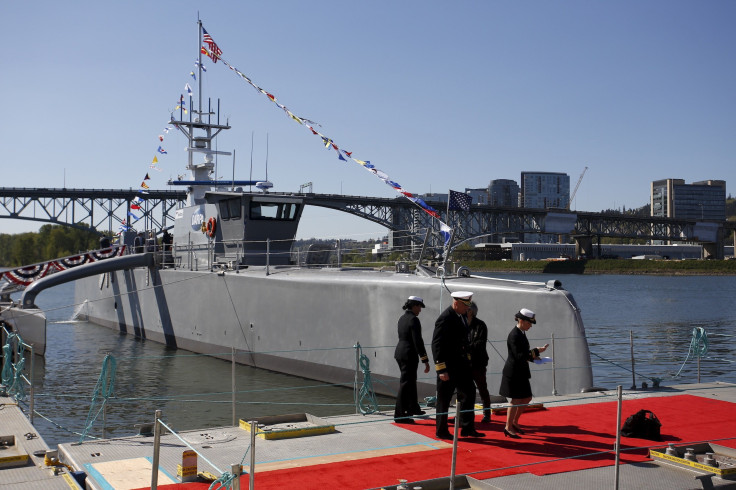US Military Unveils Robotic Warship 'Sea Hunter' To Counter Russia, China

The U.S. unveiled the prototype of an autonomous, experimental warship Thursday that would drastically reduce the cost of operations at sea and mark progress in the move toward robotic warfare. It comes as the military has increasingly aimed to boost unmanned technology to counter Chinese and Russian investments.
“This is an inflection point,” Deputy U.S. Defense Secretary Robert Work told Reuters in an interview. “This is the first time we’ve ever had a totally robotic, trans-oceanic-capable ship.”
Work said he hoped unmanned ships would be stationed in the western Pacific within as few as five years. The ship, called the Sea Hunter, is a 132-foot prototype and can cruise for two- or three-month periods. It is expected to be a fraction of the cost of a manned vessel and does not require a remote control.
DARPA Christens New Sea Robot Vessel Sea Hunter https://t.co/fh0Su1IxYh pic.twitter.com/btoRxjzecu
— R2 DRONES (@R2Drones) April 8, 2016
The Pentagon has pushed to develop unmanned drones on land, at sea and in the air. Drone technology has become critical in U.S. operations in the Middle East as the U.S. has moved away from sending soldiers on the ground in recent years. It also comes as the U.S. wants to ensure it maintains its military edge in the western Pacific as China boosts its submarine fleet.
“We’re not working on anti-submarine [technology] just because we think it’s cool. We’re working on it because we’re deeply concerned about the advancements that China and Russia are making in this space,” Peter Singer, an expert on robotic warfare at the New America Foundation think tank in Washington, told Reuters.
The ship was built by defense contractor Leidos. It is now a joint project with the U.S. Office of Naval Research. While it was originally conceived to hunt down enemy submarines, military planners now say it could serve various other roles as well.
“What we’ve kind of realized over the course of the program is that it’s a truck,” Scott Littlefield, Leidos manager of the program that developed the ship, told Spectrum. “It’s got lots of payload capacity for a variety of different missions.”
© Copyright IBTimes 2024. All rights reserved.






















